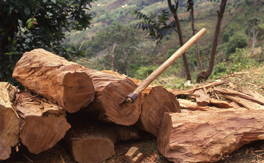Cambodia Country Strategic Plan (2019-2023)
<p>Cambodia has made great strides towards Sustainable Development Goal (SDG) 2 but needs to do more to achieve zero hunger by 2030. The Government’s mid-term and strategic review (MTSR)13 of the
<p>Cambodia has made great strides towards Sustainable Development Goal (SDG) 2 but needs to do more to achieve zero hunger by 2030. The Government’s mid-term and strategic review (MTSR)13 of the

This latest FAO study assesses the greenhouse gas (GHG) emissions from the global dairy cattle sector and provide estimates of GHG emissions associated with milk production & processing for main regions and farming systems of the world.
<p>The International Technical Conference on Agricultural Biotechnologies in Developing Countries: Options and Opportunities in Crops, Forestry, Livestock, Fisheries and Agro-industry to Face the Challenges of Food Insecurity and Climate Change, met in Guadalajara, Mexico, from 1 to 4 March 2010. The Conference noted that the use and adoption of biotechnologies in developing countries is aff
Extreme weather events and natural disasters such as drought or floods can have a devastating impact on food security as well as the social and economic development of rural households. In recent years, an increasing number of initiatives have tested weather index-based insurance to help manage these risks in agriculture.
The purpose of this document is to examine options from crop biotechnologies to address food insecurity in developing countries, particularly in the context of deepening economic and environmental uncertainty.

The key findings of FAO
The International Fund for Agricultural Development (IFAD) has released a factsheet titled
FAO has prepared an analysis of Agriculture and the UNFCCC process in 2010.
This guide is intended to guide extension service advisors and institutions who work with small scale farmers and foresters with an interest in Carbon Finance and Carbon Projects. Its aim is to support setting up carbon projects which involve small scale farmers. Their participation
<p>The livestock sector is transforming rapidly in response to shifts in the global economy and changing societal expectations.
A number of fundamental questions can now be asked about livestock biotechnologies in developing countries: To what extent are they being used today in developing countries? What are the reasons for their success (or failure) in developing countries? What emerging challenges can be addressed through their application?